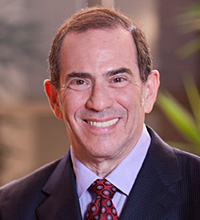The Meeting
Twelve people hungry for change are gathered in a room, even though they have strong reservations that anything can change. Despite their tone of discouragement, they finally agree to try and get beyond the impasse and see if they can move forward.
The instruction given by the consultant/facilitator is: “Pretend that you are on a ship in the middle of the ocean. The ship has enough food for one meal a day. Everyone needs to take a role in order to get to land safely.”
The consultant has set the stage to see: Who will lead? Who will follow? Who is prepared? Who has the skills to get everyone safely to shore?
The consultant, having maintained control of the group’s experience, gives the final direction: “In order to get to shore, each of you will have to learn to trust each other. I will remain quiet as you choose your own leaders. I may add another instruction in a few minutes. Good luck!”
Watching the group struggle for a few minutes, the facilitator suddenly announces, “I’m not sure, but it appears that someone has taken a day’s worth of food!”
What’s Going On?
As observers, the audience wonders: Is this a family meeting geared to help the family’s rising generation build interpersonal relationships? How will the rising generation face responsibilities? How will they figure out their role?
“Getting to shore” is a metaphor. Does it describe the mission of preserving the family enterprise that has been created? Or is it an enlightened approach, recognizing the importance of the financial, intellectual and spiritual capital of a family? What about the conundrum of dealing with the missing food?
However, this was no family meeting. The individuals who participated in this exercise had no previous connections. They were not there by personal choice.
In 1995, I facilitated this group of twelve detainees from Cook County Jail’s residential treatment program in Chicago. For the most part, the overall population of 80,000 detainees landed in the jail due to poor choices. Many had not taken responsibility or been able to handle their family or community roles. All in all, they were a highly enterprising bunch, albeit a little subversive. For me, as a psychologist and consultant, this setting was an excellent training ground to master the nuances of interpersonal dynamics.
My experience with this group of men is surprisingly similar to what I, as a practitioner in the family enterprise space, know exists in complex family businesses and personal family situations.
The raw responses I received at Cook County were no surprise. One detainee immediately jumped in after I gave the initial instructions, saying “Are you kidding! I’m never going to trust anyone!” After his remark, the group loosened up and felt free to abandon the assigned exercise to openly discuss their “distrust” of others.
Soon another man looked up. “The best thing we can do is to at least be honest. I am always honest when I meet someone. I tell them right off that they can’t trust me.” Is the same thing true, but unspoken, in family businesses and family interpersonal relationships?
A Doctrine of Fairness
As a member of a Chicago FFI study group, I have spent considerable time discussing the structures of a family business or a family office with my peers. To foster different viewpoints, the study group is intentionally multidisciplinary (attorneys, family office members, accountants, business consultants, coaches, etc.). We each understand how vulnerable an entity can be without the right structures in place. That said, where the discussion always ends up is what is going on behind the money or the business.
One of the things I learned at the Cook County Jail is what I call the Doctrine of Fairness. Most detainees clearly understand the simple idea that if you do the crime, you must pay the time. On a gut level, they know there is a clear correlation between action and consequence.
Within the management of a family business, most managers and employees understand this connection as well. They expect the consequences to be handled equitably in a structured, systematic way. The overall aim is to provide some consistency and continuity for the enterprise. Family boards, councils, constitutions, and the mission/vision that guide them are among the powerful tools that help keep a family on track. These tools set clear expectations for what is expected. As family business advisors, we understand all too well the need for structure.
Leveraging the tools mentioned above, we can help keep the Doctrine of Fairness alive in families. It is the family dynamics that challenge the doctrine.
Studying Family Dynamics and Trust
In our FFI study group, family dynamics are always part of the discussion. Our conversations range from the classic struggle for control, to family members who take unfair advantage, to subtle discrepancies between how family members are treated. Some specific challenges are tied to cultural stereotypes, such as keeping women from stepping into leadership roles.
In the management of family businesses, the interpersonal dynamics become even more complex. Family members enter the work environment with their own experiences that are colored by family history. It is clear that transitions of power, decisions about whether to reveal or conceal within a family, and concerns about who is marrying into the family are issues that often bleed over into the business. While trusting family members who are part of the bloodline is an issue, an area of specific concern is the trust of those who have married into the family. Interestingly, these people sometimes have the unique advantage of entering the company without the same baggage as those who were raised in the family.
Fostering Trust
Earlier in my career, I worked at Northwestern Memorial Hospital on an adolescent psychiatric unit. Those were different times, and the unit often kept patients for nine months to a year. Even when insurance would pay for a significant portion of the fees, those admitted were usually from affluent, business-owning families.
The intensity of treatment over time allowed for some innovative programs. I held a leadership role and was afforded the opportunity to create unique experiences. One was a cultural group. Each week, I took fifteen to twenty of the adolescents to a play or concert.
Before they could go, it was extremely important that their ability to behave could be counted on. The expectation was clear that everyone who attended would behave responsibly and respect the trust that they were given. Most evenings, a simple reminder of the expectation was enough to settle down any issue. Almost without exception, I was the sole adult on these outings.
One night, a fourteen-year-old member of the group got separated as we moved between locations. Remembering the expectation, she immediately contacted the hospital unit and was picked up. Her action set a model for other group members. While she had difficulty living up to the rules of the group, she figured out on her own how to live up to these expectations. The learning moment for me was this: The group would not have become cohesive, if each member was not willing to be responsible. Mistakes are part of the process; central is the trust among group members, including leadership.
Tying It All Together
My current interest is in creating high performance families. It is difficult to balance the need for structure while fostering trust, encouraging active engagement and promoting high performance behavior. While it’s an arduous endeavor, the achievement of this balance is a life-long lesson for all involved.
Family is the cornerstone of a family business. When the family functions as a high performance unit, the activities of the enterprise benefit. Ownership and management are charged with protecting and growing the financial value of the business. This holds true no matter if these individuals are family or non-family members. Often their first and only step is to create structure, believing that this is the key to making things work. Relationships are ignored.
What’s missing is the trust (glue) that holds everything together. Trust is what will sustain the family enterprise and fuel its future. From the perspective of the stakeholders, it is this combination that keeps the boat moving ahead safely – to shore, if you will.
About the contributor:
 Jamie Weiner, CFBA, CFWA, is the co-founder of Inheriting Wisdom, a firm dedicated to helping families find more meaningful ways to engage in what’s really happening behind the money. Jamie is a member of the FFI board of directors and chair of the Practitioner editorial committee. He can be reached at dr.jweiner@inheritingwisdom.com.
Jamie Weiner, CFBA, CFWA, is the co-founder of Inheriting Wisdom, a firm dedicated to helping families find more meaningful ways to engage in what’s really happening behind the money. Jamie is a member of the FFI board of directors and chair of the Practitioner editorial committee. He can be reached at dr.jweiner@inheritingwisdom.com.





